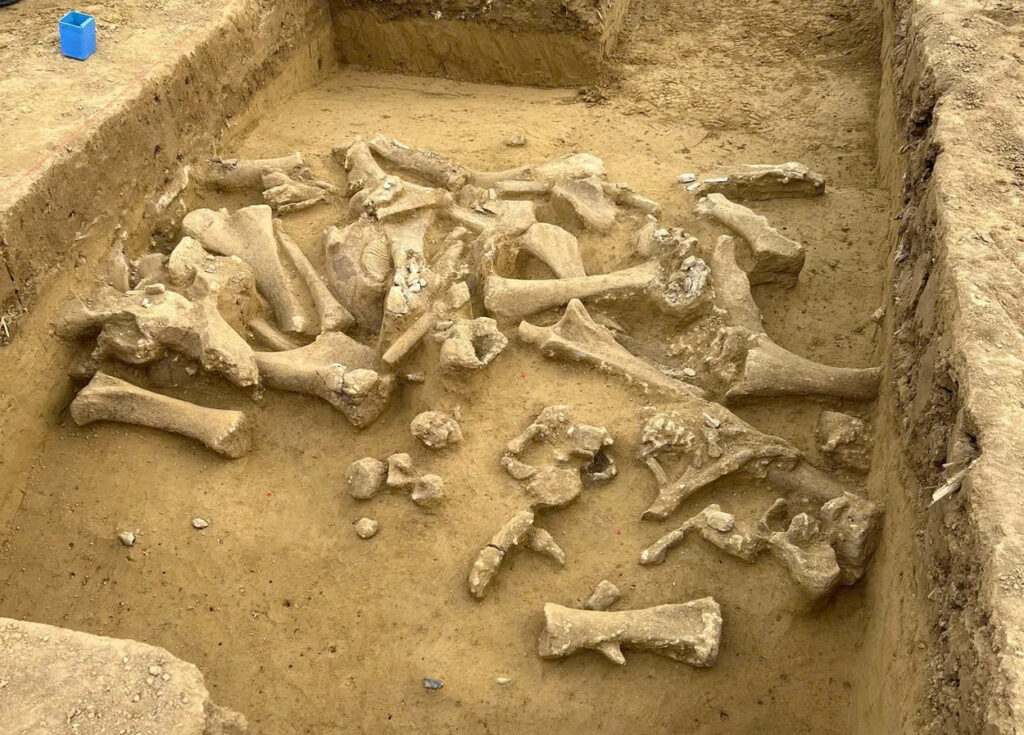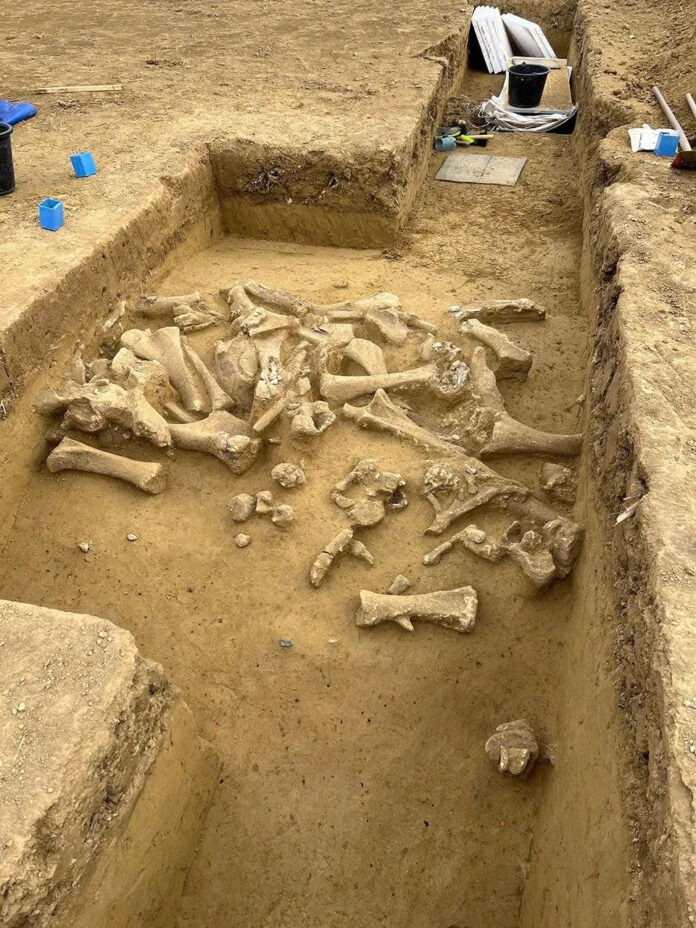The story began beneath a quiet field in Lower Austria, where layers of soil hid a chapter of human history untouched for nearly 25,000 years. What archaeologists uncovered there was not a single bone or scattered fragments, but the remains of an entire prehistoric landscape — one shaped by massive mammoths and the people who depended on them.
This latest discovery, announced by researchers from the Austrian Academy of Sciences (ÖAW), has turned a peaceful valley into one of the most significant Ice Age excavation sites in Central Europe.
A Landmark Discovery at Langmannersdorf

The archaeological site at Langmannersdorf an der Perschling had been known since the early 20th century, but its full story remained buried until now. Excavations this year revealed the skeletal remains of at least five woolly mammoths, remarkably well-preserved and clustered in two distinct locations only 15 meters apart.
For scientists, the find is more than a collection of ancient bones — it is a snapshot of life before the last Ice Age reached its peak. The evidence suggests that Ice Age hunters interacted with these mammoth herds in structured, strategic ways, reflecting a sophisticated understanding of animal behavior and seasonal patterns.
A Valley Shaped by Mammoths
Long before modern settlements appeared, the Perschling Valley served as a migration corridor for mammoths roaming Central Europe. Herds likely followed predictable grazing routes along the river, creating opportunities for prehistoric hunters.
The valley’s geographic features — open plains, river access, and natural chokepoints — made it an ideal hunting ground. For thousands of years, humans and mammoths crossed paths here, shaping each other’s stories in ways that would later be revealed through scattered bones, stone tools, and the remains of hunted animals.
Two Sites, Two Stories: Hunting and Craftsmanship

The newly uncovered bone accumulations reveal two different, but connected, scenes of human activity.
1. The Butchering Site — Evidence of a Successful Hunt
One cluster of bones shows unmistakable signs of systematic butchering. Marks on the bones, patterns of breakage, and the arrangement of skeletal elements suggest that prehistoric hunters processed at least two mammoths at this location.
This area may have served as a temporary camp where hunters:
-
removed meat,
-
processed hides,
-
extracted marrow,
-
and divided usable material for transport.
The scale of the remains indicates a coordinated effort that would have required planning, cooperation, and knowledge passed down through generations.
2. The Ivory Workshop — Crafting Tools From Giants

A second cluster nearby reveals something even more compelling: an ancient workshop.
Among the bones were:
-
intact tusks,
-
disassembled ivory pieces,
-
and fragments shaped in ways consistent with tool production.
Ivory was a valuable resource for Ice Age communities. It could be carved into:
-
spearheads,
-
needles,
-
decorative pieces,
-
and durable tools for survival.
Finding both raw tusks and worked ivory together strongly suggests that hunters processed materials on-site, turning parts of the mammoths into equipment before moving on.
This level of craftsmanship implies not only skill, but also an understanding of material properties — knowledge built through centuries of practice.
Science Reconstructs the Ice Age World
Behind the scenes, a wide range of scientific methods helped researchers reconstruct the environment and life of the mammoth hunters:
-
DNA analysis identified animal origins and genetic relationships.
-
Stable isotope studies revealed diet and seasonal migrations.
-
Radiometric dating confirmed the timeline at approximately 25,000 years ago.
-
Paleodemographic modeling helped estimate human population behavior and the number of animals represented.
Together, these techniques brought clarity to a period in which humans were adapting rapidly to challenging climates and shifting ecosystems.
Marc Händel of the Austrian Archaeological Institute summarized the significance simply:
“The fact that we found not just individual bones but intensively used areas where several animals were processed exceeded our expectations.”
A Glimpse Into Human Resilience
The discoveries at Langmannersdorf shed light on more than mammoths — they reveal the resilience and adaptability of the people who lived alongside them.
Living in harsh Ice Age conditions, these communities:
-
tracked massive animals across vast landscapes,
-
coordinated group hunts,
-
utilized every part of their prey,
-
and crafted tools essential for long-term survival.
Each bone, tusk, and tool fragment reflects the ingenuity required to thrive in an unforgiving world.
Why This Discovery Matters Today
As scientists continue to analyze the findings, the Langmannersdorf site promises to deepen our understanding of:
-
Ice Age ecosystems,
-
prehistoric hunting strategies,
-
early craftsmanship and tool-making,
-
and the cultural habits of human groups in Central Europe.
For modern audiences, the excavation serves as a reminder of how connected human survival once was to the rhythms of the natural world — and how much knowledge our ancestors developed through observation, skill, and necessity.
In the quiet soil of Lower Austria, the story of mammoths and the people who followed them had waited patiently. Now uncovered, it offers a vivid, humbling glimpse into life 25,000 years ago — a world where creativity and survival walked hand in hand.
